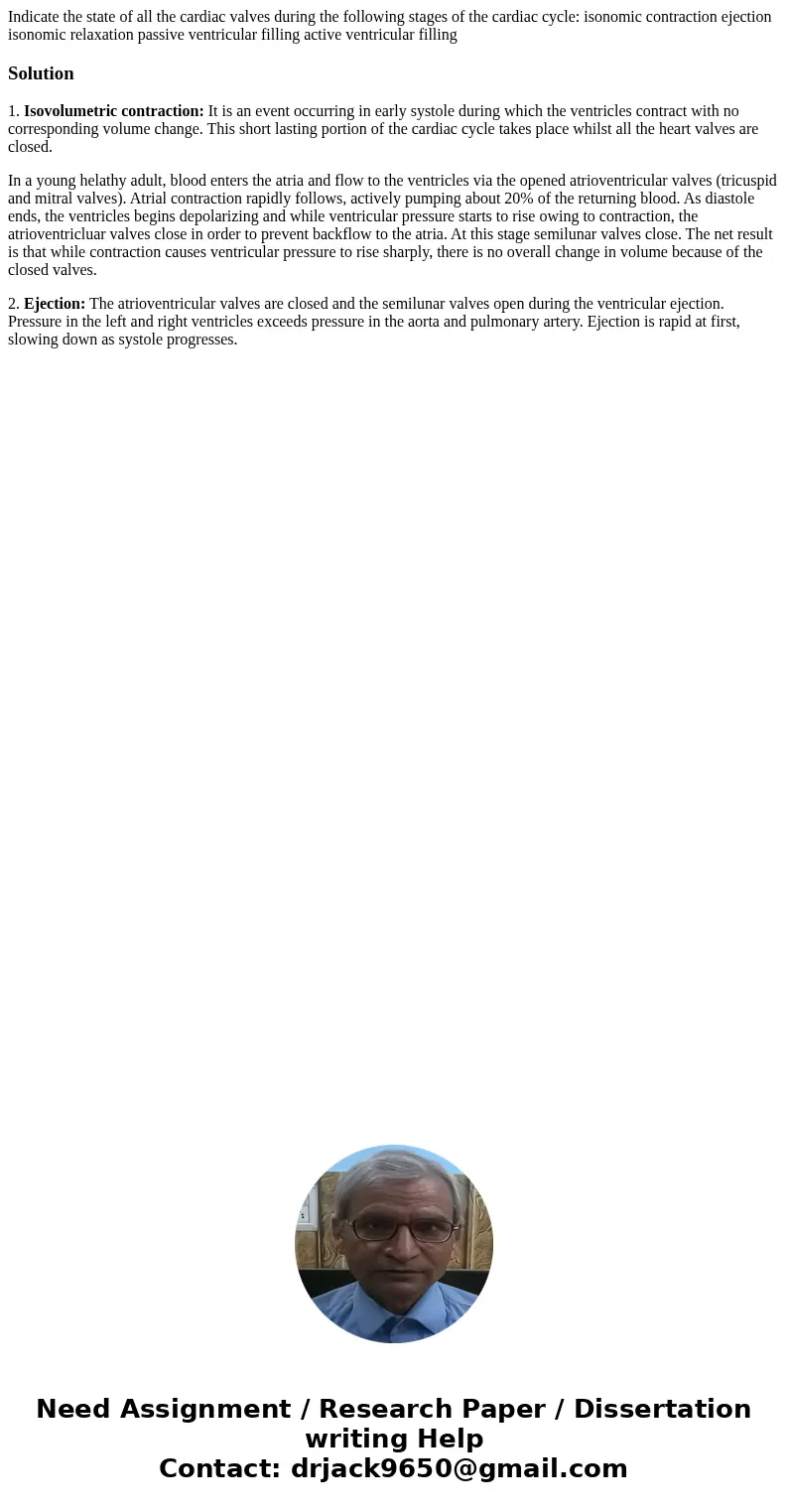Indicate the state of all the cardiac valves during the foll
Solution
1. Isovolumetric contraction: It is an event occurring in early systole during which the ventricles contract with no corresponding volume change. This short lasting portion of the cardiac cycle takes place whilst all the heart valves are closed.
In a young helathy adult, blood enters the atria and flow to the ventricles via the opened atrioventricular valves (tricuspid and mitral valves). Atrial contraction rapidly follows, actively pumping about 20% of the returning blood. As diastole ends, the ventricles begins depolarizing and while ventricular pressure starts to rise owing to contraction, the atrioventricluar valves close in order to prevent backflow to the atria. At this stage semilunar valves close. The net result is that while contraction causes ventricular pressure to rise sharply, there is no overall change in volume because of the closed valves.
2. Ejection: The atrioventricular valves are closed and the semilunar valves open during the ventricular ejection. Pressure in the left and right ventricles exceeds pressure in the aorta and pulmonary artery. Ejection is rapid at first, slowing down as systole progresses.

 Homework Sourse
Homework Sourse